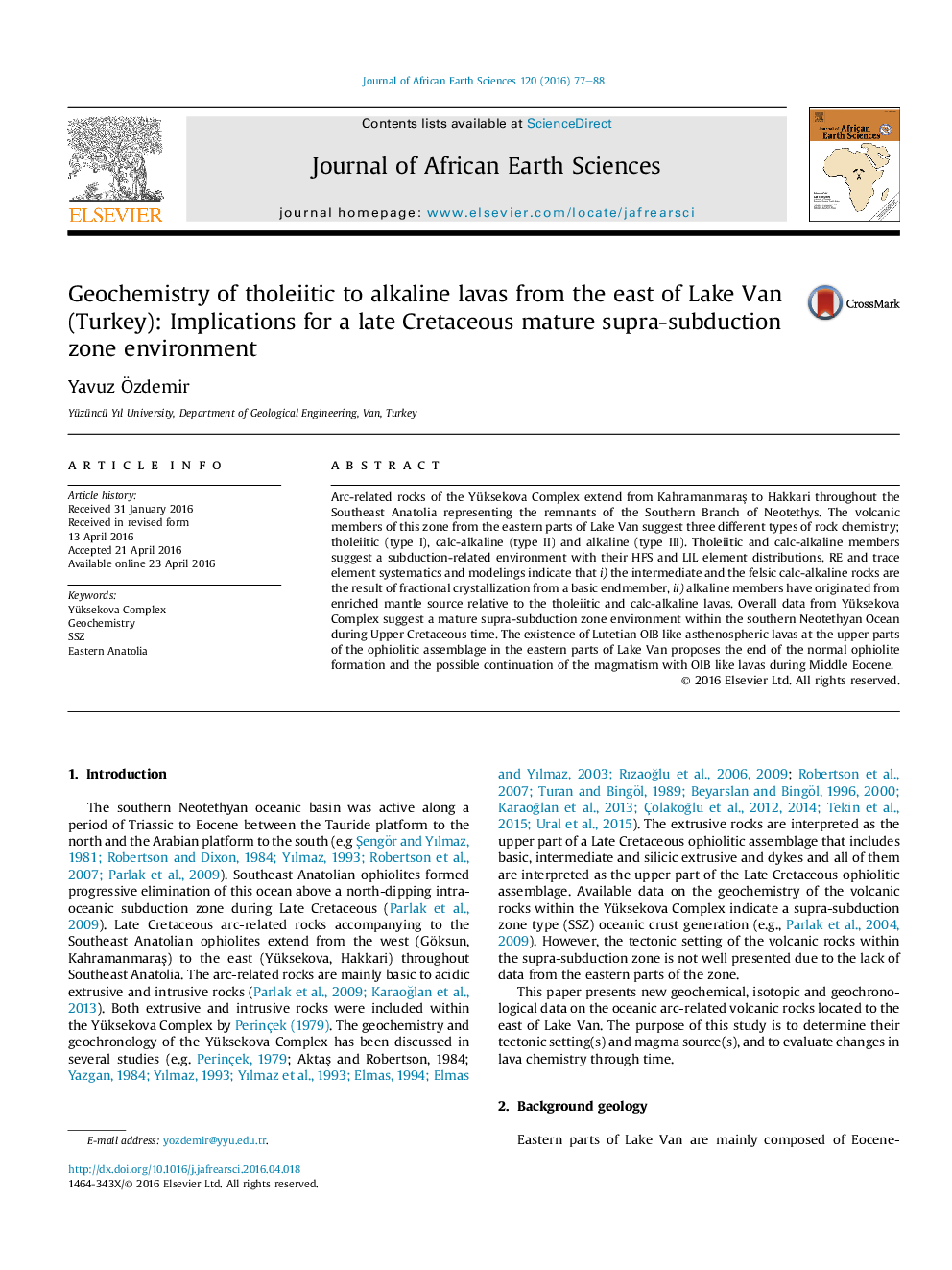| Article ID | Journal | Published Year | Pages | File Type |
|---|---|---|---|---|
| 4728214 | Journal of African Earth Sciences | 2016 | 12 Pages |
•New geochemical data and 40Ar–39Ar ages from the Yüksekova Complex.•The volcanic members of the Yüksekova Complex from the eastern parts of Lake Van suggest three different types of rock chemistry.•HFS and LIL element distributions of tholeiitic and calc-alkaline members points a subduction-related environment.•Alkaline members have originated from enriched mantle source relative to the tholeiitic and calc-alkaline ones.
Arc-related rocks of the Yüksekova Complex extend from Kahramanmaraş to Hakkari throughout the Southeast Anatolia representing the remnants of the Southern Branch of Neotethys. The volcanic members of this zone from the eastern parts of Lake Van suggest three different types of rock chemistry; tholeiitic (type I), calc-alkaline (type II) and alkaline (type III). Tholeiitic and calc-alkaline members suggest a subduction-related environment with their HFS and LIL element distributions. RE and trace element systematics and modelings indicate that i) the intermediate and the felsic calc-alkaline rocks are the result of fractional crystallization from a basic endmember, ii) alkaline members have originated from enriched mantle source relative to the tholeiitic and calc-alkaline lavas. Overall data from Yüksekova Complex suggest a mature supra-subduction zone environment within the southern Neotethyan Ocean during Upper Cretaceous time. The existence of Lutetian OIB like asthenospheric lavas at the upper parts of the ophiolitic assemblage in the eastern parts of Lake Van proposes the end of the normal ophiolite formation and the possible continuation of the magmatism with OIB like lavas during Middle Eocene.
